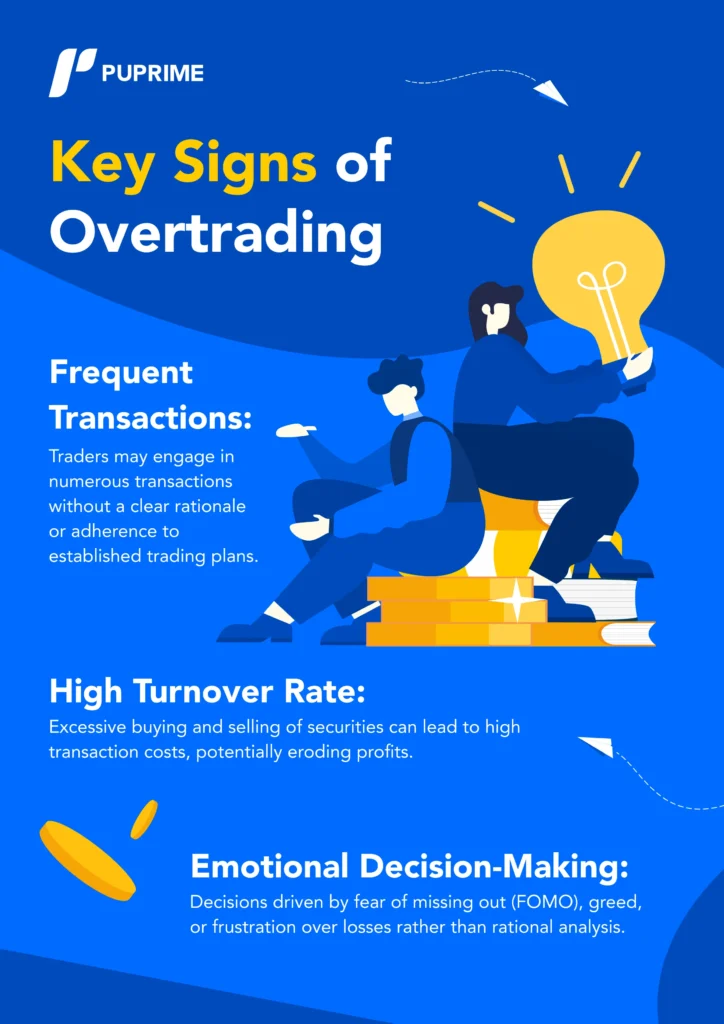Did you know that even the best day traders can occasionally confuse a bull market with a stampede? In the world of day trading, technical analysis is both an art and a science, but common mistakes can derail even seasoned traders. This article dives into frequent pitfalls like over-reliance on indicators, ignoring market trends, and the dangers of emotional decision-making. We’ll explore how poor risk management and a lack of a solid trading plan can lead to costly errors. Additionally, we’ll highlight the importance of understanding chart patterns, backtesting, and adapting to market conditions. Join DayTradingBusiness as we uncover how to avoid these missteps and enhance your trading success.
What are the most common mistakes in day trading technical analysis?
1. Ignoring the trend: Traders often fail to recognize the overall market direction, leading to poor decision-making.
2. Over-relying on indicators: Many depend too heavily on technical indicators without considering price action or market context.
3. Lack of a trading plan: Not having a clear strategy can result in impulsive trades based on emotions rather than analysis.
4. Poor risk management: Failing to set stop-loss orders or risking too much capital on a single trade can lead to significant losses.
5. Overtrading: Trading too frequently can increase transaction costs and lead to burnout, impacting decision quality.
6. Neglecting news events: Ignoring economic news or events can cause unexpected volatility, affecting technical setups.
7. Misreading charts: Traders often misinterpret chart patterns or fail to recognize false signals, leading to losses.
8. Chasing losses: Trying to recover losses by making impulsive trades can result in a downward spiral.
9. Lack of discipline: Deviating from a trading plan or strategy due to emotional responses can lead to poor outcomes.
10. Not reviewing performance: Failing to analyze past trades prevents learning from mistakes and improving future strategies.
How can beginners avoid technical analysis errors in day trading?
Beginners can avoid technical analysis errors in day trading by following these steps:
1. Stick to a Plan: Develop and adhere to a trading strategy that includes entry and exit points, and stick to it.
2. Use Reliable Indicators: Start with a few proven technical indicators, like moving averages or RSI, to avoid confusion.
3. Practice on a Simulator: Use a trading simulator to practice without real money, helping to build confidence and understanding.
4. Keep It Simple: Avoid overcomplicating charts with too many indicators. Focus on key patterns and signals.
5. Manage Risk: Set stop-loss orders to limit potential losses and protect your capital.
6. Stay Informed: Keep up with market news and events that could impact stock movements.
7. Review Trades: Analyze past trades to identify mistakes and learn from them.
8. Limit Time Frames: Focus on shorter time frames for day trading, but don’t get caught up in minute-to-minute fluctuations.
By implementing these strategies, beginners can reduce common technical analysis errors and improve their day trading success.
Why is over-reliance on indicators a mistake in day trading?
Over-reliance on indicators in day trading can lead to missed opportunities and poor decision-making. Indicators often lag behind price movements, causing traders to react too late. They can also give false signals, leading to unnecessary trades or losses. Additionally, focusing solely on indicators may lead traders to ignore important market context and news events that influence price action. Balancing indicators with price action analysis and market sentiment is crucial for effective trading.
How does ignoring market trends affect day trading success?
Ignoring market trends can significantly hinder day trading success. It leads to poor decision-making, increased losses, and missed opportunities. Without adapting to prevailing trends, traders might enter or exit positions at the wrong times, resulting in unfavorable trades. For instance, trading against a strong upward trend can result in consistent losses. Additionally, failing to recognize trends means overlooking key technical analysis indicators, which are vital for making informed trades. In short, neglecting market trends can derail a day trader's strategy and profitability.
What impact does poor risk management have on day trading?
Poor risk management in day trading can lead to significant financial losses, emotional stress, and a damaged trading reputation. Traders may over-leverage, risking more capital than they can afford to lose, which often results in large drawdowns. Without effective stop-loss strategies, even minor market fluctuations can wipe out a trading account. Additionally, poor risk management can lead to impulsive decisions, causing traders to deviate from their strategies and increase the likelihood of mistakes. Ultimately, this undermines long-term profitability and can lead to burnout.
Why is understanding chart patterns crucial for day traders?
Understanding chart patterns is crucial for day traders because they provide insights into price movements and market psychology. Recognizing patterns like flags, triangles, and head-and-shoulders can help traders anticipate potential breakouts or reversals. This knowledge enables traders to make informed decisions, manage risk effectively, and improve their timing for entry and exit points. Ignoring chart patterns often leads to missed opportunities or costly mistakes in trades.
How can emotional decision-making lead to mistakes in day trading?

Emotional decision-making can lead to mistakes in day trading by causing traders to act impulsively rather than following their technical analysis. For instance, fear of missing out (FOMO) might push a trader to buy a stock just before a downturn, while panic selling can result from emotional reactions to market fluctuations, ignoring established stop-loss orders. Additionally, overconfidence from a few successful trades can lead to reckless risk-taking, straying from a disciplined strategy. Ultimately, emotions can cloud judgment, leading to poor entries and exits that deviate from data-driven decisions.
What are the dangers of using too many technical indicators?
Using too many technical indicators can lead to analysis paralysis, making it hard to make quick trading decisions. It can also create conflicting signals, causing confusion about market direction. Additionally, overly complex setups may distract from price action and key trends. Traders might rely too heavily on indicators instead of developing a solid trading strategy, which increases the risk of losses. Simplifying your approach often leads to clearer insights and better decision-making.
How does misinterpreting volume affect trading decisions?
Misinterpreting volume can lead to poor trading decisions by creating false signals. If a trader sees high volume but misreads its context, they might assume a trend is strong when it’s actually weak, leading to premature entries or exits. Conversely, low volume might be mistaken for a lack of interest, causing missed opportunities in potential breakouts. Understanding whether volume confirms or contradicts price movements is crucial; ignoring this can result in significant losses or missed profits.
Why is it important to have a trading plan in day trading?

A trading plan is crucial in day trading because it provides a clear strategy to follow, helping you avoid emotional decisions. It defines your entry and exit points, risk management rules, and goals, allowing for disciplined trading. Without a plan, you're likely to make impulsive trades based on market noise, leading to costly mistakes. A solid plan also helps you analyze technical indicators consistently, improving your chances of profitability.
Learn about Why Is Institutional Trading Important for Day Traders?
What role does backtesting play in avoiding trading mistakes?
Backtesting helps traders identify potential mistakes by testing strategies against historical data. It reveals weaknesses in trading plans, allowing for adjustments before real trades are made. This process highlights patterns that may lead to losses, helping traders avoid emotional decisions in live markets. By validating strategies, backtesting builds confidence and reduces the risk of common mistakes in day trading technical analysis.
How can failure to adapt to market conditions hurt day traders?
Failure to adapt to market conditions can severely hurt day traders by leading to poor decision-making. When traders stick to outdated strategies, they risk significant losses as market dynamics shift. For example, ignoring volatility can result in missed opportunities or excessive losses. Additionally, a lack of responsiveness to news events can cause traders to enter or exit positions too late. Overall, not adjusting to changing market conditions can lead to diminished profits and increased risk exposure.
What mistakes do experienced day traders make in technical analysis?
Experienced day traders often make these mistakes in technical analysis:
1. Over-Reliance on Indicators: Many traders depend too heavily on technical indicators without considering market context.
2. Ignoring Price Action: Some overlook the importance of price movement and trends, focusing instead on patterns or signals.
3. Chasing Losses: Trying to recover losses by making impulsive trades can lead to poor decision-making.
4. Overtrading: Engaging in too many trades can dilute focus and increase transaction costs.
5. Neglecting Risk Management: Failing to set stop-loss orders increases exposure to significant losses.
6. Confirmation Bias: Traders may only seek information that supports their existing beliefs, ignoring contradictory data.
7. Lack of Adaptability: Sticking rigidly to a strategy without adjusting to changing market conditions can be detrimental.
8. Emotional Trading: Allowing emotions to dictate trades rather than following a systematic approach can lead to mistakes.
9. Ignoring News Events: Failing to consider economic news or events that impact market volatility can result in unexpected losses.
10. Inconsistent Strategy Application: Not applying a trading strategy consistently can lead to erratic performance and missed opportunities.
How does not keeping a trading journal lead to repeated errors?
Not keeping a trading journal prevents traders from analyzing their past decisions. Without documentation, it’s easy to forget mistakes, leading to repeated errors. A journal helps identify patterns in losses and reinforces learning from past trades. When traders skip this step, they miss the opportunity to refine their strategies and improve their decision-making. This lack of reflection keeps them trapped in a cycle of mistakes, affecting their overall performance in day trading.
What are the pitfalls of following other traders’ strategies blindly?

Blindly following other traders’ strategies can lead to several pitfalls. First, you may not understand the reasoning behind their trades, which can result in poor decision-making when conditions change. Second, every trader has a unique risk tolerance; what works for one may not suit you, leading to unnecessary losses. Third, market conditions fluctuate constantly, and strategies that were once effective can become obsolete. Lastly, relying on others can stifle your learning and development as a trader, preventing you from developing your own analytical skills and strategies.
How can timeframes impact the accuracy of technical analysis in day trading?
Timeframes significantly impact the accuracy of technical analysis in day trading. Shorter timeframes, like 1-minute or 5-minute charts, can lead to noise and false signals, making it harder to identify genuine trends. Conversely, longer timeframes, such as hourly or daily charts, provide a clearer picture but may lag behind real-time price action. Day traders often make the mistake of relying solely on shorter timeframes, which can result in overtrading and emotional decisions. It’s crucial to balance multiple timeframes to gain a more accurate understanding of market movements and improve trading outcomes.
Learn about How Do SEC Rules Impact Day Trading?
Conclusion about Common Mistakes in Day Trading Technical Analysis
In conclusion, successful day trading hinges on avoiding common pitfalls in technical analysis. By steering clear of over-reliance on indicators, embracing market trends, and maintaining disciplined risk management, traders can enhance their decision-making. Understanding chart patterns and emotional influences is crucial, as is the importance of backtesting and having a solid trading plan. By recognizing the potential pitfalls of blindly following others and consistently adapting to market conditions, traders can significantly improve their outcomes. For further insights and guidance, DayTradingBusiness is here to support your journey in mastering technical analysis and achieving trading success.
Learn about Common Mistakes in Day Trading Sentiment Analysis
Sources:
- An empirical model of daily highs and lows of West Texas ...
- Chasing trends at the micro-level: The effect of technical trading on ...
- Market Efficiency and the Returns to Technical Analysis: Evindence ...
- Stock Market Index Data and indicators for Day Trading as a Binary ...
- Unraveling the Dynamics of SPY Trading Volumes: A ...